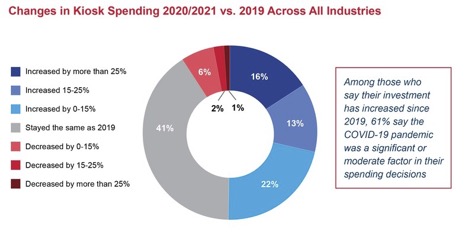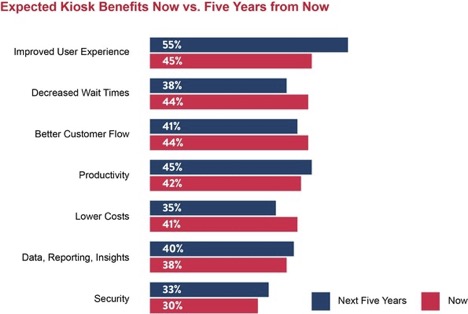
Canada embraces no-touch tech with no signs of slowing down
EP&T Magazine
Automation / Robotics Electronics automation Technology touchlessSelf-service kiosks grow in use
New proprietary research from SCI Group Inc. (SCI) and Signifi Solutions Inc. (Signifi) reveals that investment in self-service technologies is exploding as Canadian businesses seek safe distancing, touchless transactions and a simple, intuitive user experience for employees and customers during the pandemic. Half of respondents say their organization actually increased investment in kiosk technology prior to the pandemic, with three-in-ten saying their investment level has increased by more than 15 per cent since 2019.
As part of this research, SCI and Signifi commissioned a survey with Angus Reid to explore actual and planned investments in kiosk technology among Canadian organizations, in several sectors, to identify key trends. It uncovered three significant insights: 1) the pandemic propelled short-term kiosk investment; 2) a focus on digital transformation will continue to drive long-term investment; 3) user satisfaction is the primary motivator for investing in kiosks, which include self-checkout terminals, interactive maps, vending machines and employee check-in devices.
Kiosk Investment Driven by the Pandemic
The pandemic has been a clear impetus behind investments in self-service technology. Among those who say their investment has increased in the past 12 months, 61% identified the COVID-19 pandemic as a significant or moderate factor in their decision. For the healthcare sector, the primary application of kiosk technologies was for check-in purposes to help improve customer wait times.

“The pandemic drove more people to use kiosks, which increased their comfort level with the technology and is leading to even better user-centric design for the next generation of devices,” said Peter Collier, Vice President, Technology, SCI Group. “We expect that increasing user comfort with kiosks and ongoing design improvements by kiosk manufacturers will continue to drive adoption.”
Digital Transformation Driving Long-Term Investment
While the pandemic played a key role in increased interest and investment in the self-service space, there are no signs of this growth slowing down. Nearly half of Canadian businesses are already deploying self-service technologies, and another third plan to deploy kiosks or some form of self-service technology in the next 12 months.
Canadian businesses are including kiosk technology as part of their digital transformation strategies, with 77% of organizations stating kiosk technology to be important to their business in the next five years.
“There’s a new appetite for automation and kiosk technologies, part of which may be attributed to the shift in user habits that has stemmed from the pandemic,” says Jamie McDowell, Vice President of Marketing at Signifi Solutions. “More and more Canadian consumers and employees seem to appreciate the simplicity and interactivity provided by kiosk technologies. Organizations are seeing this shift and including kiosk technology in their digital transformation plans.”
User Experience Fuelling Kiosk Investment
Interestingly, the key business drivers for investing in kiosks are all about people, at least in the short term. According to the research, the primary motivator for businesses when investing in self-service technologies is customer and employee satisfaction, with 63 per cent of businesses identifying this as a top driver. This was particularly noted in the retail industry, where 90% of respondents said one of the main benefits they’re seeking from kiosks/self-technology is better customer flow.

“This research shows that organizations are looking for more than efficiency; they want to reduce customer wait times and improve the flow of people through stores and workplaces. Many are also looking to expand beyond transactional experiences to make kiosks part of an omnichannel infrastructure,” Collier says. “This also marks an important step forward for self-service technologies underscoring the shift away from thinking of kiosks as simply a cost and efficiency play – though both remain important drivers for buyers.”
